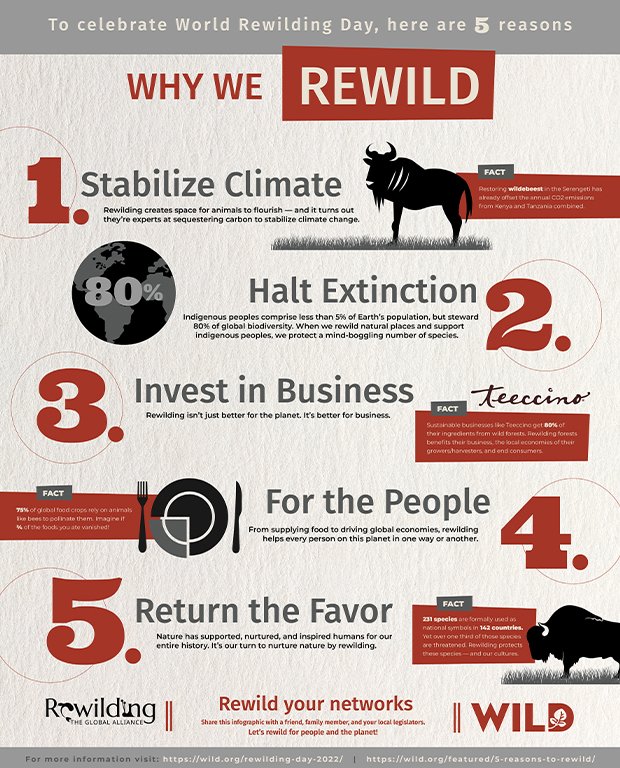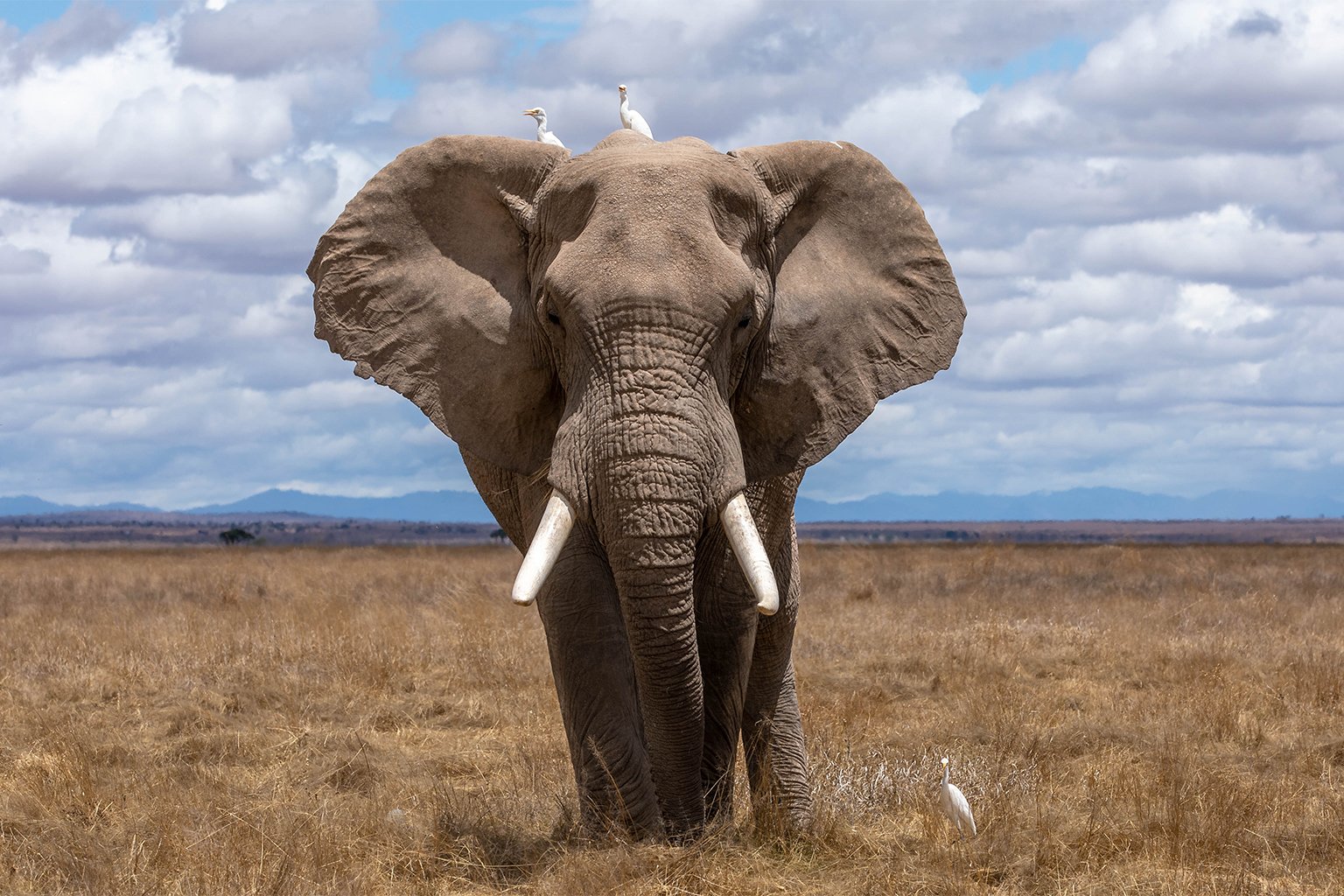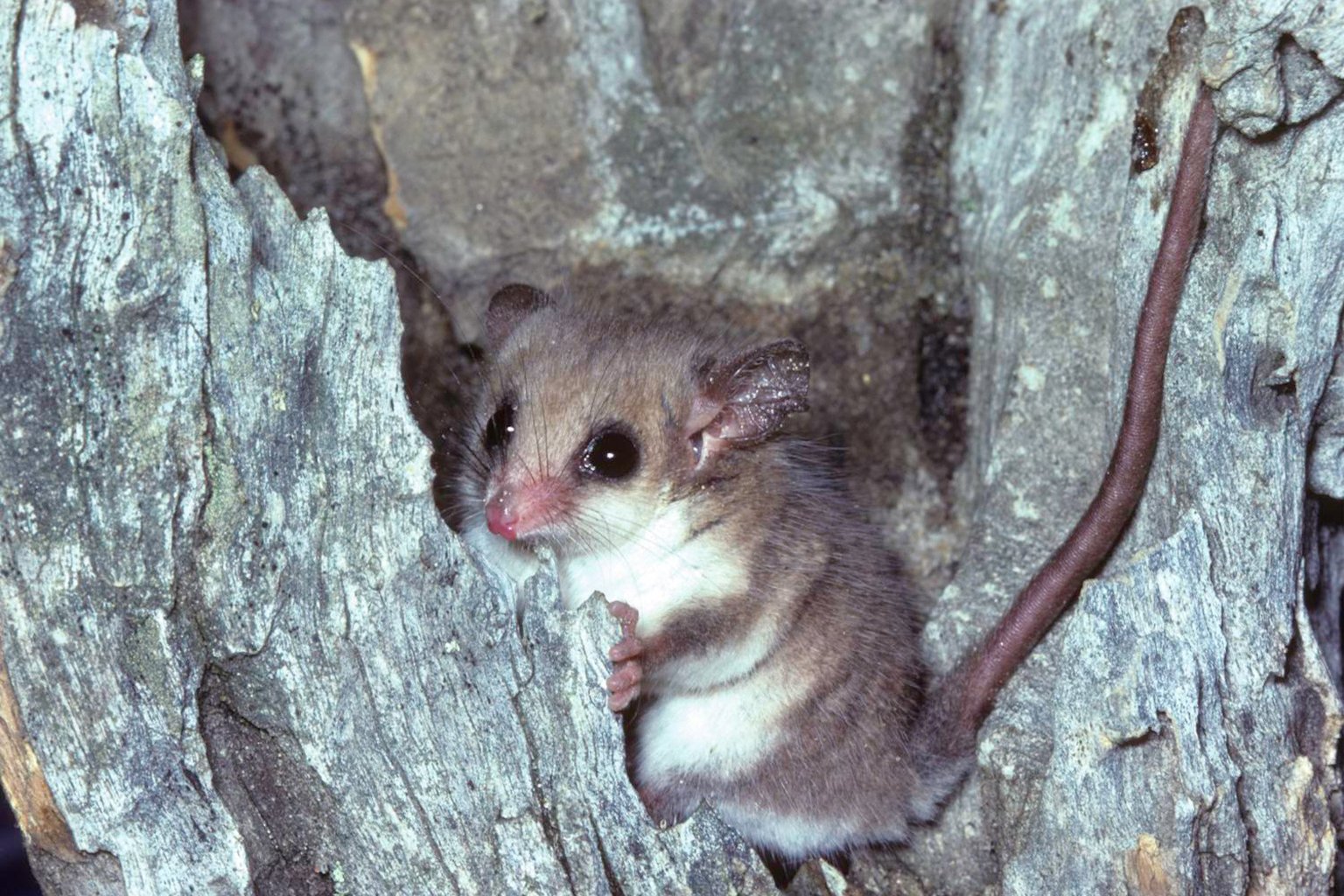- The Global Rewilding Alliance and OpenForests have officially launched a map of rewilding projects around the world.
- Organizations have contributed stories, photos and videos for projects in 70 countries covering 1 million square kilometers (386,000 square miles), and the alliance’s leaders say more will be added.
- Rewilding is a type of ecological restoration that aims to restore natural dynamics and processes to ecosystems.
- Proponents of the approach say it has the potential to address both biodiversity loss and climate change.
In the past decade, the European bison (Bison bonasus) has made a comeback in Central and Eastern Europe. Hunters had killed the last known bison in the region nearly a century ago. But thanks to reintroduction programs in Belarus, Poland, Russia and Romania, nearly four times as many bison are alive today as there were in 2003. The increase, to some 7,000 animals, was enough to prompt the IUCN to downgrade the European bison’s conservation status from vulnerable to near threatened in 2020.
The largest of Romania’s free-roaming herds lives in the Țarcu Mountains, a low-slung range in the Southern Carpathians heavy with old-growth forest. The reintroduction of the bison, including the recent addition of two males and six females in 2020, is a collaboration of WWF Romania and the Netherlands-based nonprofit Rewilding Europe. It’s also one of dozens of rewilding projects featured on a new map from the Global Rewilding Alliance that was officially launched April 11.
“I wasn’t aware that you have [wild bison] going through Romania,” said Alexander Watson, CEO of OpenForests, the social enterprise company based in Germany hosting the rewilding project map.
Watson said the details of these types of projects are now available to the public and to other organizations through the map, providing not only ideas but proof of what’s possible with projects that restore the functions of natural areas. Member organizations of the Global Rewilding Alliance can post photos, videos and stories about their projects on the map. To join, groups must agree to the Alliance’s charter, which defines rewilding as “helping nature heal.”
To date, the map includes rewilding projects in more than 70 countries covering 1 million square kilometers (386,000 square miles). The hope, according to the Global Rewilding Alliance’s leaders, is to add more over the next 10 years. The timeline coincides with the U.N. Decade on Ecosystem Restoration, which aims to halt and reverse degradation of land and sea environments through 2030.
“A map is an ideal canvas to combine storytelling on a map with data,” Watson said. “It creates the inspiration, but also gives the confidence that something’s really happening there.”
The platform provides transparency that could inform the marketing of carbon credits, for example, OpenForests said. They also note that the explorer.land platform on which the map is built includes soil carbon and tree cover layers, adding further information about the impacts of these projects. A layer will also include Mongabay’s geolocated rewilding stories.
Vance Martin, president of the U.S.-based WILD Foundation, said the scale of rewilding projects ranges from “cocoon” conservancies in India that began with the rewilding of a 42-hectare (105-acre plot of farmland) aimed at connecting tiger habitat, to an effort to set aside a mammoth, 520,000-km2 (200,000-mi2) no-take section of the Pacific Ocean.
The map brings website visitors face-to-face with the stories of how these types of restoration are playing out and why they’re important, “making them more tangible” to people who may live far from these spots on the planet, Watson said.
“I think people only protect what they can see and what they know,” he added.
It’s also a way to bring the concept of rewilding, of allowing nature to retake control, to a wider audience. The term dates back to the late 1990s, when a pair of scientists, Michael Soulé and Reed Noss, introduced rewilding as a concept that centered on the restoration of wilderness and the return of large animals, especially carnivores, to the landscape.
The concept has expanded in the past two and a half decades, but it rests on allowing nature to take the lead — and to bring back natural processes rather than a fixed state to an ecosystem.
An ecosystem is “not something static,” Andrea Perino, an ecologist and science policy coordinator at the German Centre for Integrative Biodiversity Research, told Mongabay. “It’s a dynamic thing.”
Read more: Wild bison, taking over Europe and North America, will once again roam England
In a 2019 paper in the journal Science, Perino and her colleagues grappled with the challenges of rewilding. They pinpoint three elements of the inner workings of functioning ecosystems. First, the food web is complex. Humans have often chipped away at this complexity, in some cases completely removing animals that have cascading effects on other species — like the bison in Eastern Europe, for example.
Second, ecological dynamics depend on sometimes random natural disturbances in the landscape, such as fire, that can shuffle the balance between species. In many places around the globe, however, humans have tried to corral or eliminate these forces.
Third, species need the ability to move and expand so that they don’t overcrowd an area and tax its resources too heavily. “Dispersal,” as scientists call it, also helps prevent inbreeding and too much competition within a species. Yet again, humans have hemmed in wildlife, stymying this component of ecosystem flux.
Returning these elements is what sets rewilding apart from other types of restoration. The approach rests on the paradigm that, given the opportunity, nature can heal itself.
“Nature knows what it’s doing and has done for millions of years,” Laurien Holtjer, head of communications at Rewilding Europe, said in an email.
Karl Wagner, a scientist and co-director of the Global Rewilding Alliance, said studies have shown “that we need much larger area where nature prevails” if we’re going to end biodiversity loss — or reduce the amount of carbon in the atmosphere to limit the effects of climate change.
“We’re not going to reach our climate goals without a healthy dose of restoration and especially rewilding,” Martin said.
A relatively recent line of research has seen some researchers call for “animation of the carbon cycle,” which connects the importance of intact ecosystems rich in biodiversity to dealing with climate change. By foraging, disturbing the soil, and dispersing seeds, animals bolster the ability of plant life to take up carbon. If forest elephants were allowed to return to the numbers that existed prior to widespread hunting, forests in the Congo Basin would pluck an extra 85 million metric tons of carbon from the atmosphere — equivalent to what France emits each year as a result of burning fossil fuels, scientists have shown.

“The beautiful thing by putting this on the map is that you can actually put a carbon value on biodiversity, which hasn’t been done until now,” said Magnus Sylvén, a biologist and co-director of the Global Rewilding Alliance. “You can put a carbon value on bringing back whales or wildebeests or beavers or sharks.”
The key is to allow nature to take over and lead the way to healthy ecosystems, Wagner said.
“That doesn’t mean that humans are locked out,” Wagner said, “but it does mean that nature has priority.”
Indigenous communities in particular have long used the world’s forests, grasslands and marine environments. Today, rafts of research demonstrate that Indigenous- and community-managed land- and seascapes are often healthier than they are under conventional protected areas. But skeptics worry that rewilding could sideline the needs of humans on the path to natural recovery.
Holtjer said rewilding projects must acknowledge the part these groups play.
“Rewilding embraces the role of people, and their cultural and economic connections to the land,” she said. “It is about finding ways to work and live within healthy, natural vibrant ecosystems and reconnect with wild nature.”
That ability to participate in changing the planet for the better is what excites many supporters about rewilding.
“What I love about this platform is it shows people taking action,” said Heather Campbell, CEO of Bush Heritage Australia. “We’re making sure that we have species that are going to thrive in places into the future.”
In one of Bush Heritage’s projects in Western Australia, the group has worked to restore ecosystems with native vegetation, which they hoped would allow native species such as western pygmy possums (Cercartetus concinnus) to return. Four of the five species in this family of pocket-size marsupials, which weigh about as much as a golf ball, live nowhere but Australia, and their numbers have dwindled since the arrival of Europeans to the continent. Rabbits, cats, foxes, and other introduced species have altered natural habitats, and humans have changed the way fires historically shaped the landscape.


Along with trying to get rid of these threats, Bush Heritage also set up nest boxes in the hopes that possum families might take up residence. Campbell visited the site in 2021 with the team’s ecologist to see if their efforts had made a difference. The first box was empty, and the second held only a colony of huntsman spiders.
When they opened the third nest box, however, “Up popped two little babies,” she said. The moment encapsulated the goal of rewilding and validated the team’s work.
“We got the habitat right,” Campbell said. “That really makes your day.”
Citations:
Perino, A., Pereira, H. M., Navarro, L. M., Fernández, N., Bullock, J. M., Ceaușu, S., … Wheeler, H. C. (2019). Rewilding complex ecosystems. Science, 364(6438), eaav5570. doi:10.1126/science.aav5570.
Soulé, M., & Noss, R. (1998). Rewilding and biodiversity: Complementary goals for continental conservation. Wild Earth, 8, 18-28. Retrieved from https://rewilding.org/wp-content/uploads/2012/04/RewildingBiod.pdf.
Banner image: Musk oxen in a field. Image courtesy of the Global Rewilding Alliance.
John Cannon is a staff features writer with Mongabay. Find him on Twitter: @johnccannon
FEEDBACK: Use this form to send a message to the author of this post. If you want to post a public comment, you can do that at the bottom of the page.












